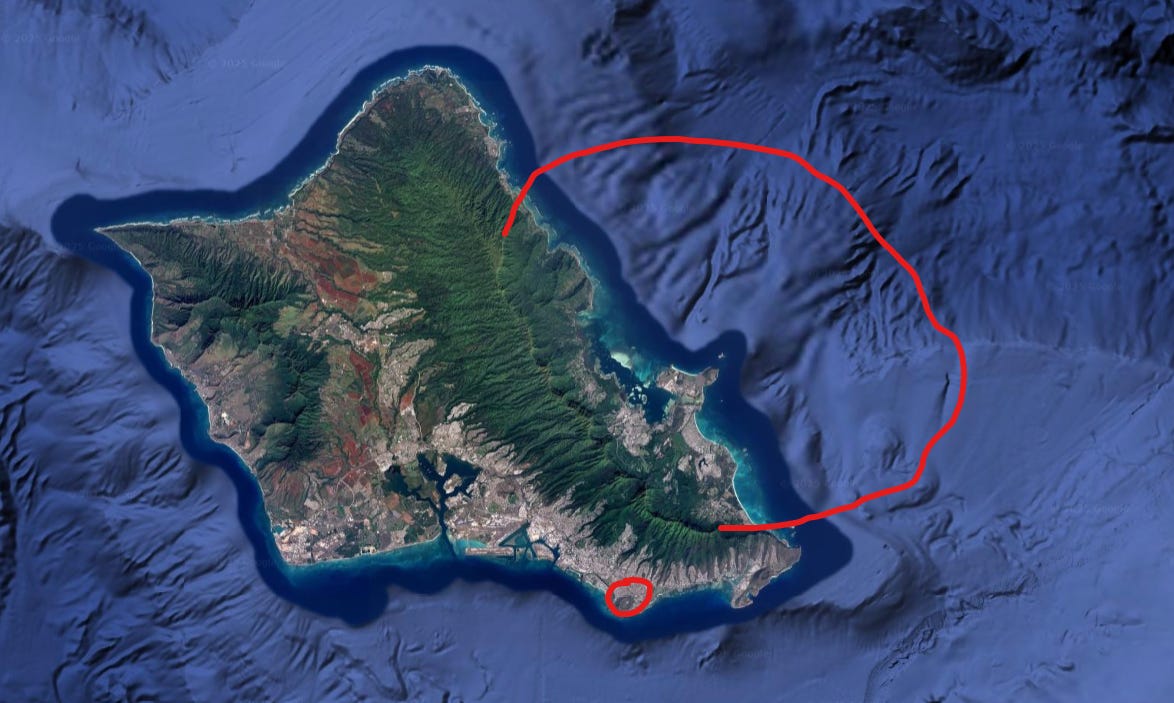The Florida Japan-handle
Culture, Urbanism, History and Geology in Oahu, Hawaii
Honolulu feels like what would happen if you picked up Miami, dropped it between Fukuoka and Jeju, and came back to see what it was like 50 years later. The culture, politics, and built environment of the island is a mishmash of aspects from its American conquerors and it’s large Asian immigrant population. In other words, Hawaii is the Florida Japan-handle.
Geology of Japan, Urbanism of Florida

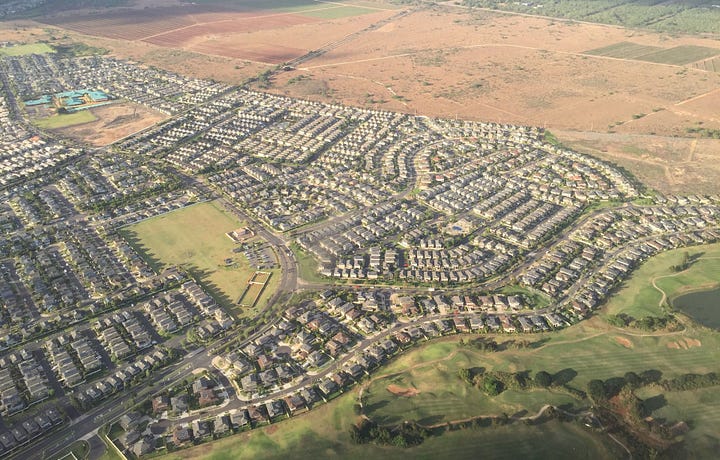
Hawaii is, just like Japan, a volcanic island in the Pacific. This endows the island with impressive mountains that rise straight up from the water line, shrouded in a deep-green jungle. Japan’s volcanic activity comes from its place on the edge of the Pacific plate, along the ring of fire. Hawaii, however, is right in the middle of the Pacific plate and has no tectonic activity whatsoever. Instead, there happens to be a giant magma plume underneath Hawaii that punches through the plate, creating the islands.
The Pacific plate moves northwest a few inches a year, but the magma plume stays in the same place. This creates the diagonal shape of the Hawaiian island chain. A few million years ago, the northwestern-most Kauai was above the plume and rose out of the volcanic activity. Over time, the Pacific plate shifted northwest and now the big island is on top of the plume and has the most active volcanoes. In a few million more years a new island will appear to the southeast of the big island and the island chain will grow.

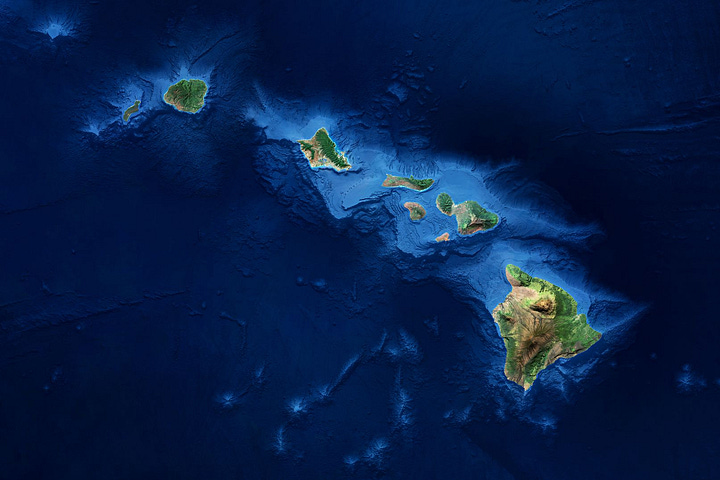
The ancient volcanoes of Hawaii are huge. To get a sense for this, consider Diamond Head on Oahu. Diamond head is the crater left behind after the volcano of the same name blew up and dispersed most of the volume of the mountain into the atmosphere. The remaining caldera towers over all the skyscrapers in Honolulu and covers a significant area of the city.
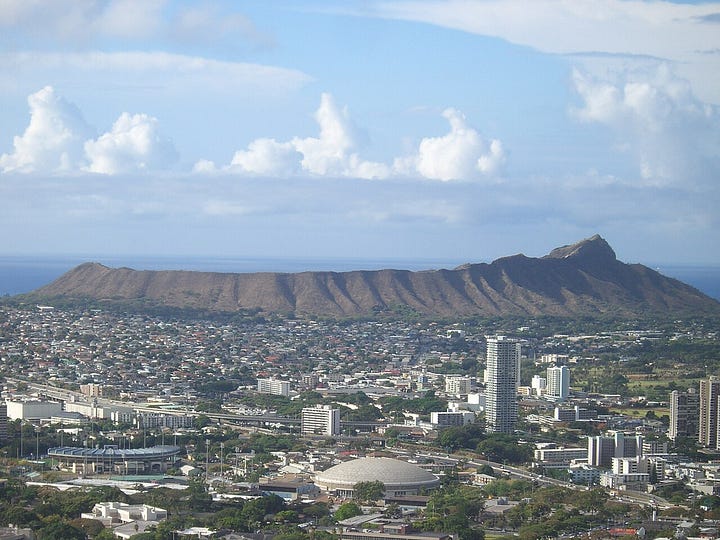
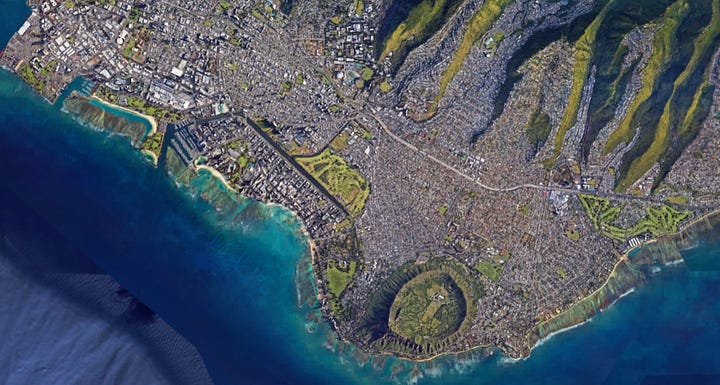
Zooming out, you see the Koʻolau mountain range which covers the eastern half of Oahu and dwarfs Diamond Head. But the Koʻolau mountain range is not really a mountain range at all, rather it is itself the caldera left behind from a volcano hundreds of times the size of Diamond Head. The right half of the volcano collapsed into the sea millions of years ago, leaving only a portion still above water.
Unlike its geological similarities to Japan, the urbanism of Honolulu shares much more with the sprawling, car-centric and expensive housing markets of America.
Honolulu is geographically constrained between the mountains and the sea, so the downtown and tourist districts are quite tall and dense. Still, it’s no Hong Kong. The buildings in Waikiki range form inoffensive to ugly, but the streets are pretty good, with lots of storefronts, relatively narrow and slow traffic lanes, and lots of pleasant indoor-outdoor spaces.
There are no subways in the city and only a meager single-line raised metro whose construction was first planned in 1960 and is still incomplete today. Outside of the downtown areas, density is low and the land use takes on the more traditional and decrepit American form of single family homes, strip malls, and stroads.
Zoning and construction are tightly controlled, in the American style, with lots of extra environmental concerns layered on top. The map of Oahu below shows in yellow where any residential or mixed use construction other than single family homes may be built. Blue is single-family only, orange is commercial/industrial, and red is agricultural or preserved. Honolulu is the yellow area in the bottom right of the island.
Cuisine of Japan, Culture of Florida
After the volcanic mountains, the next clearest similarity between Hawaii and Japan is the food. People of Asian descent are a plurality of the population in Hawaii, and most of those are either Japanese, Filipino, or Chinese (fun fact: Sun Yat-Sen, the leader of the Chinese nationalists in their civil war against Mao, was educated in Honolulu!)
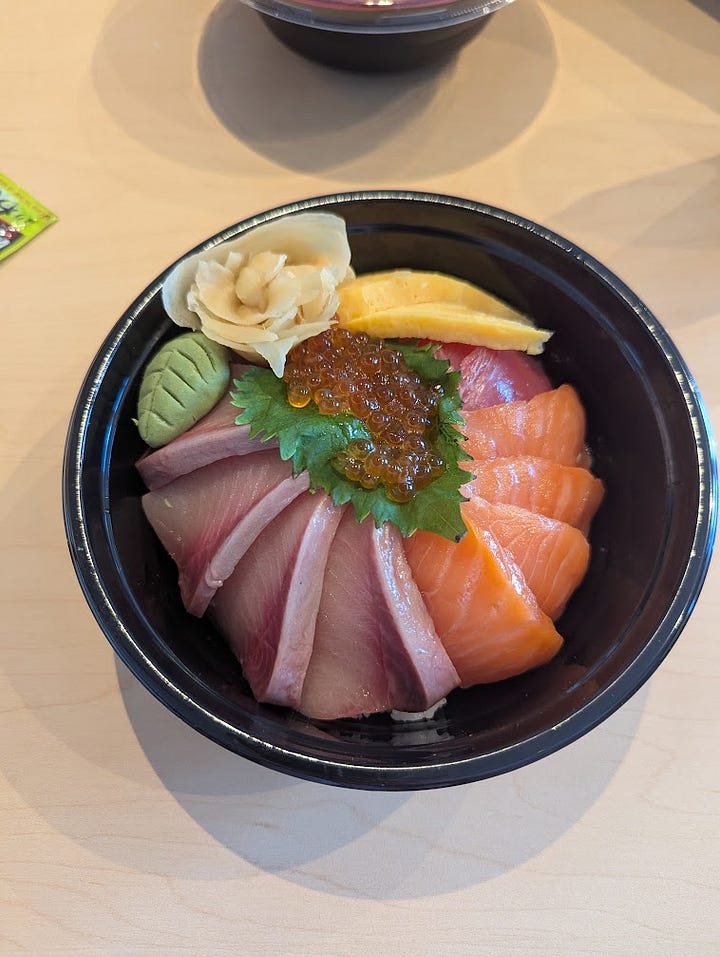
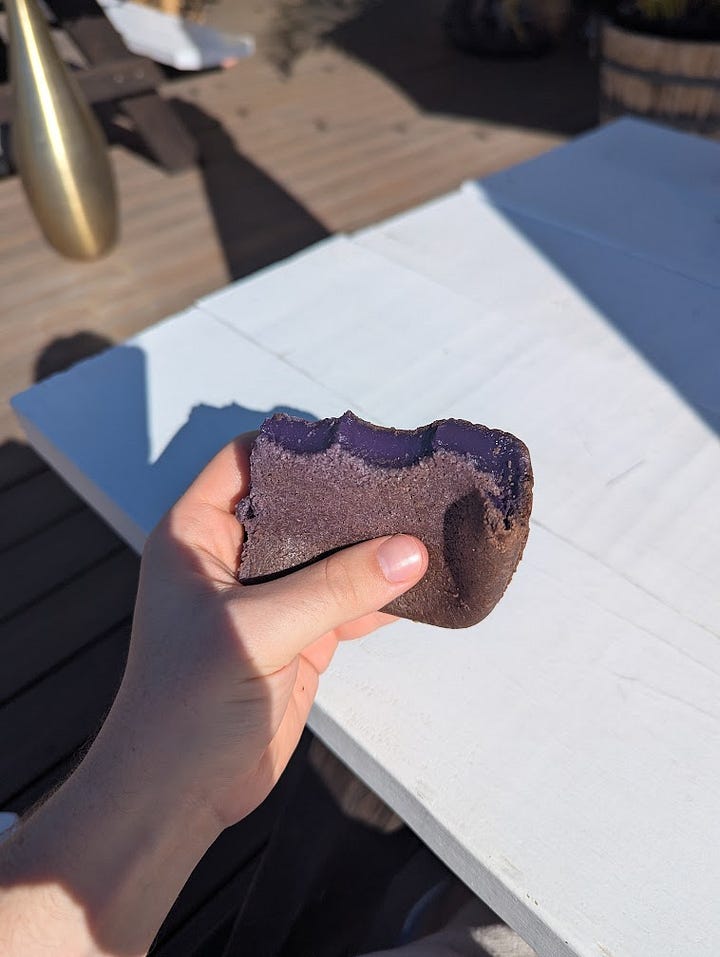
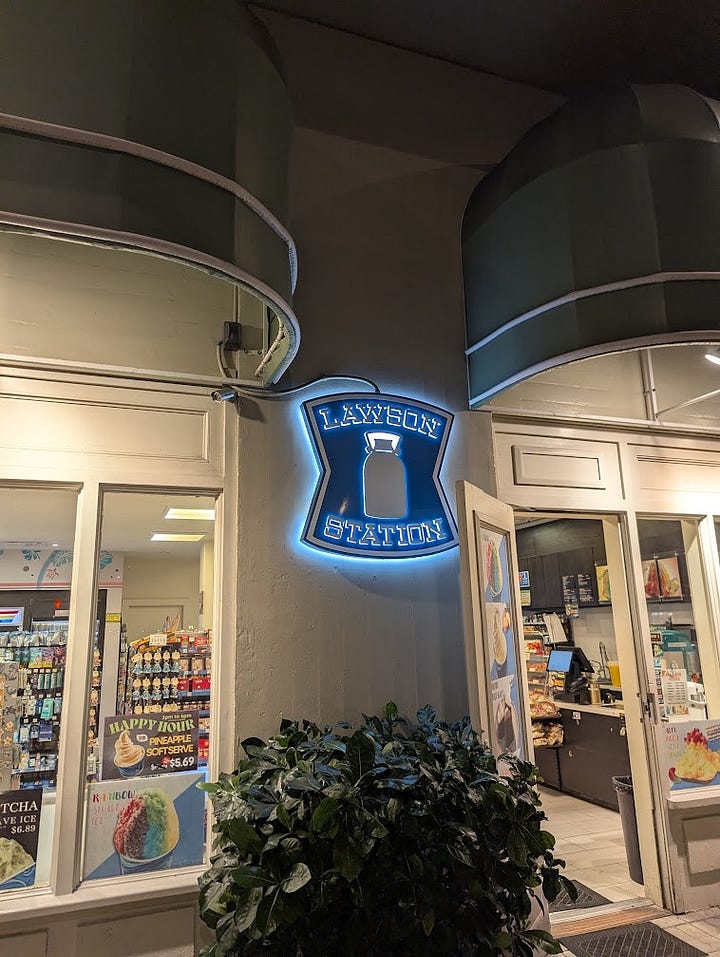

But despite this large Asian population and popular cuisine, the culture of Hawaii is more similar to Florida than Japan.
There is much more multi-culturalism and multi-lingualism. There are big trucks, loud homeless people, lazy drunks, ostentatious luxury, and fireworks.




Meiji attitude to the West vs American grievance politics
The final bridge that Hawaii makes between Japan and Florida is in their history with the West. Both Hawaii and Japan have some history of humiliation and subjugation by the Western world.
In Hawaii’s case, Western influence began to drive their politics immediately after the discovery of the islands in 1774. Kamehameha’s conquest of the islands began in 1782, aided by Western guns and military advisors. For the next century, the monarchy survived but was forced to make a series of concessions to a Western controlled parliament. Finally in 1893, the monarchy was overthrown by a real life conspiracy by a group of 13 businessmen self-styled as the Committee of Safety and the Islands were annexed by America 5 years later.
Japan’s reaction the technological superiority of the Western world was an extended period of civil strife that eventually led to the accession of Emperor Meiji from a pure figurehead to a position of near-absolute rule in something like a Western-style constitutional monarchy in 1868. This began the fastest industrialization in history and rocketed Japan to global power within 50 years. The power and growth that these Western reforms gave the Japanese created an enduring respect for the West that lasts to this day.
Hawaii had less domestic potential to work with, so their path was different and the uprooting of Hawaiian society was more complete and less self-determined. This makes the politics of colonial history in Hawaii more similar to the politics around Native Americans on the mainland: obsession with guilt, land acknowledgements, and true-blooded ancestry. People fret over whether they say they are Hawaiian or if they are just “from Hawaii” even if they were born there. In this way, Hawaii mirrors the traditional American form of grievance politics, despite some similarities with Japan’s colonial history.
There is more to crack in the cultural code of Hawaii, but one of the important keys is understanding that the island is something like Miami in the Sea of Japan i.e, the Florida Japan-handle.


